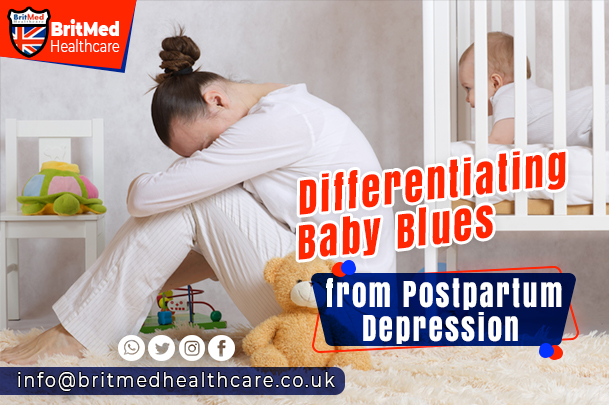Maternal Blues Onset: Differentiating Baby Blues from Postpartum Depression
With the arrival of a new baby, many mothers go through a gamut of emotions from elation to anxiety. For some women, though, those feelings can quickly escalate into a more profound and debilitating condition. Of the many, two of the more commonly confused or amalgamated conditions are baby blues and postpartum depression. Understanding the difference between these two conditions becomes necessary in order to apply appropriate care and support to the mothers.
Baby blues: a common but mild condition
The postpartum blues, also referred to simply as the baby blues, is usually a transient, mild condition with estimates as high as 80% of new mothers suffering from it. Symptoms include feelings of sadness, anxiety, and mood swings. The onset of the baby blues commonly occurs a few days after childbirth but may last two weeks. These symptoms are usually related to hormonal changes, sleep deprivation, and the physical and emotional demands of caring for a newborn.
For the most part, the baby blues do not interfere with a mother’s ability to care for her child, and symptoms can be kept manageable through basic life adjustments, including getting sufficient rest, eating properly, and engaging in social support networks. In rare cases, the baby blues can be a symptom of something more severe.
Postpartum Depression: A Serious Mental Health Disorder
Postpartum depression is a more serious and chronic condition, affecting approximately 10 to 15 percent of new mothers. It is distinct from the “baby blues” since it constitutes a mental health disorder due to the strong feelings of sadness, hopelessness, and despair that can last for months or several years. These symptoms can impact a mother’s capability to care for her and her child significantly and might cause feelings of guilt, shame, and inadequacy.
PPD manifests itself in various different ways, which can be seen as listed below:
– Continuous sad feelings or a feeling of hopelessness
– Withdrawing from activities or giving up on hobbies
– Changes in appetite or sleeping pattern
– Inability to bond with the baby
– Jitteriness or anxiety
– Headache or low energy physical symptoms
Severe cases manifest as suicidal thoughts or attempts. Thus, it is always good to know the symptoms of PPD and consult an immediate professional opinion.
Differences between Baby Blues and Postpartum Depression
Though similar in some ways, the key differences exist between the two conditions known as baby blues and postpartum depression:
- The duration of the condition: Baby blues can last for two weeks or less, while postpartum depression may last for several months or years.
- Severity: PPD is an advanced disorder that seriously affects a mother’s daily life.
- Treatment: The baby blues often require only simple changes in daily life habits, but for postpartum depression, medical treatment and psychological therapy are often needed.
Conclusion
In conclusion, it is important to differentiate the baby blues from postpartum depression to ensure proper care and support for a new mom. The baby blues are common but a mild condition; on the other hand, PPD is a serious mental disorder that requires immediate attention. Healthcare providers should be aware of such differences and should make active efforts to identify and treat PPD among their patients. Recognition of the signs of PPD and professional help offer the mother the necessary treatment to recover and move along uninterruptedly during this critical period of her life.
References:
Baby Blues and Postpartum Depression: Mood Disorders and Pregnancy | Johns Hopkins Medicine
Baby blues after pregnancy | March of Dimes
Postpartum Depression: How It Differs From the “Baby Blues” (webmd.com)
Websites:
Britmed Healthcare: https://britmedhealthcare.co.uk/
Nightingale Hospital: https://www.nightingalehospital.co.uk/
You can also book on Top Doctors UK Contact us on WhatsApp 08009708017
Top Doctors: https://www.topdoctors.co.uk/doctor/ahmed-el-missiry

